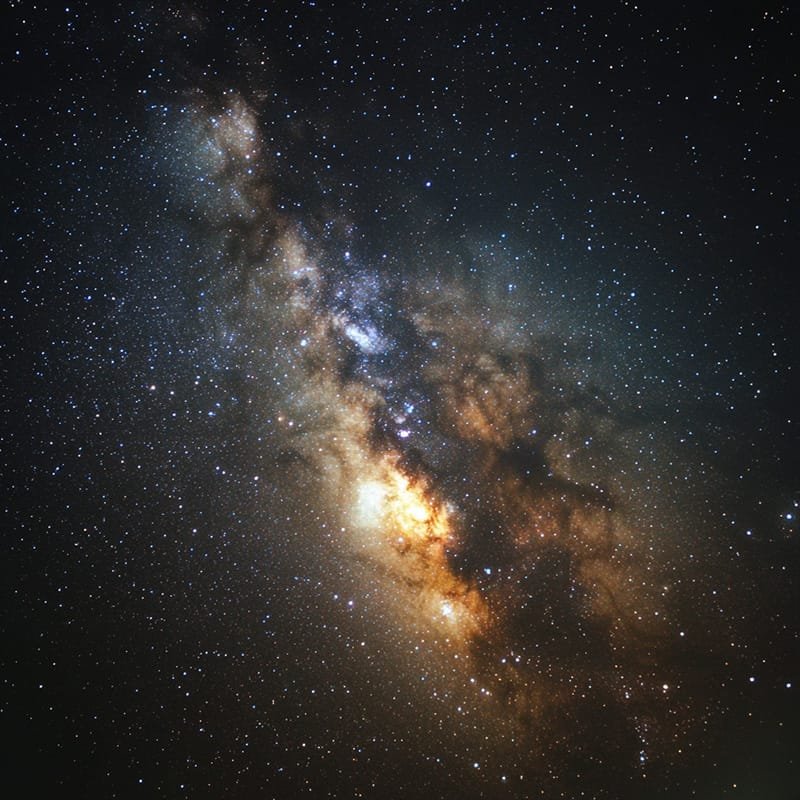Planetary nebulae are one of the most beautiful and intriguing objects in the universe. They are glowing shells of gas and dust that surround dying stars. Despite their name, planetary nebulae have nothing to do with planets. The term “planetary” was coined by early astronomers who thought they resembled the planets in our solar system when viewed through a telescope.
The discovery of planetary nebulae dates back to the 18th century when French astronomer Charles Messier first observed and cataloged these objects. However, it wasn’t until the 19th century that their true nature was understood. It was then that astronomers realized that planetary nebulae were not planets, but rather the remnants of dying stars.
What are the Characteristics of Planetary Nebulae?
Planetary nebulae come in a variety of shapes and sizes, but they all share some common characteristics. They are typically round or elliptical in shape and have a glowing appearance. The color of a planetary nebula can vary, but most are greenish-blue or reddish-orange.
Chemically, planetary nebulae are composed of ionized gas and dust. The gas is primarily made up of hydrogen and helium, with trace amounts of other elements such as oxygen, nitrogen, and carbon. The dust consists of tiny particles of solid material, such as carbon and silicates.
In terms of size, planetary nebulae can range from a few light-years across to several tens of light-years. They are located at varying distances from Earth, with some being relatively close within our own Milky Way galaxy, while others are located in more distant galaxies.
What Causes Planetary Nebulae to Form?
To understand the formation of planetary nebulae, we must first understand the life cycle of a star. Stars are born from clouds of gas and dust called nebulae. Over time, the gas and dust in a nebula begin to collapse under the force of gravity, forming a dense core known as a protostar.
Once the protostar reaches a certain temperature and density, nuclear fusion begins. This is the process in which hydrogen atoms combine to form helium, releasing a tremendous amount of energy in the process. The energy produced by nuclear fusion counteracts the force of gravity, causing the star to enter a stable phase known as the main sequence.
As a star ages, it eventually exhausts its supply of hydrogen fuel. At this point, the star begins to expand and cool, entering the red giant phase. During this phase, the outer layers of the star are expelled into space through stellar winds.
The Life Cycle of a Star: A Brief Overview
The life cycle of a star can be divided into several distinct phases. It begins with the birth of a star from a nebula, followed by the main sequence phase, the red giant phase, and ultimately, the death of a star.
The birth of a star occurs when a cloud of gas and dust collapses under its own gravity. As the cloud collapses, it forms a dense core called a protostar. Over time, the protostar grows hotter and denser until nuclear fusion begins.
During the main sequence phase, a star fuses hydrogen atoms in its core to form helium. This process releases an enormous amount of energy in the form of light and heat. The energy produced by nuclear fusion counteracts the force of gravity, keeping the star stable.
As a star ages and exhausts its supply of hydrogen fuel, it begins to expand and cool. This marks the start of the red giant phase. During this phase, the outer layers of the star expand outward, engulfing any nearby planets or asteroids.
Eventually, the red giant sheds its outer layers through stellar winds, leaving behind only its core. This core, known as a white dwarf, is extremely dense and hot. It emits intense ultraviolet radiation, which ionizes the surrounding gas and dust, creating a planetary nebula.
The Role of Stellar Winds in Planetary Nebula Formation
Stellar winds play a crucial role in the formation of planetary nebulae. Stellar winds are streams of charged particles, such as protons and electrons, that are ejected from the surface of a star. These winds are driven by the intense heat and radiation produced by the star.
As a star enters the red giant phase, its outer layers expand and become less tightly bound to the star’s gravitational pull. This allows stellar winds to blow away the outer layers of the star, carrying with them gas and dust.
The stellar winds carry the expelled material away from the star, creating a shell of gas and dust that surrounds the core. This shell is known as a circumstellar envelope. Over time, the circumstellar envelope expands and cools, forming a planetary nebula.
The Formation of a Planetary Nebula: A Step-by-Step Process

The formation of a planetary nebula can be divided into several distinct steps. It begins with the death of a star, followed by the formation of a white dwarf, the ejection of gas and dust, and ultimately, the formation of a planetary nebula.
When a star exhausts its supply of hydrogen fuel, it begins to expand and cool, entering the red giant phase. During this phase, the outer layers of the star are expelled into space through stellar winds.
As the red giant sheds its outer layers, it leaves behind only its core. This core is known as a white dwarf. White dwarfs are extremely dense and hot objects that emit intense ultraviolet radiation.
The intense ultraviolet radiation emitted by the white dwarf ionizes the surrounding gas and dust in the circumstellar envelope. This causes the gas and dust to glow, creating a planetary nebula.
The Importance of Planetary Nebulae in Astronomy Research
Planetary nebulae play a crucial role in astronomy research. They provide valuable insights into the chemical composition of the universe, the life cycle of stars, and can be used as distance indicators.
By studying the chemical composition of planetary nebulae, astronomers can learn more about the elements that make up the universe. Planetary nebulae are enriched with heavy elements, such as carbon and nitrogen, which are produced during the later stages of a star’s life.
Planetary nebulae also provide valuable information about the life cycle of stars. By studying the different stages of planetary nebula formation, astronomers can gain a better understanding of how stars evolve and eventually die.
Additionally, planetary nebulae can be used as distance indicators. By measuring the brightness and size of a planetary nebula, astronomers can estimate its distance from Earth. This information can then be used to determine the distance to other objects in the universe.
The Diversity of Planetary Nebulae: Different Shapes and Sizes
Planetary nebulae come in a wide variety of shapes and sizes. While most are roughly spherical or elliptical in shape, there are also some that have more complex structures.
Bipolar planetary nebulae are one type of planetary nebula that have a distinct hourglass or butterfly shape. These nebulae are believed to be formed by binary star systems, where two stars orbit each other. The interaction between the two stars causes the ejection of material in opposite directions, creating the bipolar shape.
Elliptical planetary nebulae are another type that have an elongated or oval shape. These nebulae are thought to be formed by stars that have a high rotation rate. The fast rotation causes the ejection of material along the equator of the star, resulting in the elliptical shape.
Round planetary nebulae are the most common type and have a roughly spherical shape. These nebulae are formed by stars that have a relatively low rotation rate and do not have any significant interactions with other stars.
The Future of Planetary Nebula Research: New Discoveries and Technologies
The future of planetary nebula research looks promising, with new discoveries and technologies on the horizon. One area of focus is the use of new telescopes and instruments to study planetary nebulae in greater detail.
Advancements in telescope technology, such as the James Webb Space Telescope, will allow astronomers to observe planetary nebulae with unprecedented clarity. This will enable them to study the structure and composition of these objects in greater detail.
Another area of interest is studying planetary nebulae in other galaxies. By observing planetary nebulae in different environments, astronomers can gain a better understanding of how these objects form and evolve.
Additionally, there is the potential for discovering new types of planetary nebulae. As technology improves and our understanding of these objects deepens, astronomers may uncover new and unexpected variations in their shapes, sizes, and compositions.
The Significance of Planetary Nebulae in Understanding the Universe
Planetary nebulae are not only beautiful objects to observe, but they also hold great significance in our understanding of the universe as a whole. They provide valuable insights into the chemical evolution of the universe, the life cycle of stars, and can be used as tools for understanding distant galaxies.
By studying the chemical composition of planetary nebulae, astronomers can learn more about how elements are created and distributed throughout the universe. Planetary nebulae are enriched with heavy elements that are produced during the later stages of a star’s life. By studying these elements, astronomers can gain a better understanding of how they are formed and distributed throughout the cosmos.
Planetary nebulae also provide valuable information about the life cycle of stars. By studying the different stages of planetary nebula formation, astronomers can gain insights into how stars evolve and eventually die. This knowledge is crucial for understanding the overall structure and dynamics of galaxies.
Furthermore, planetary nebulae can be used as tools for understanding distant galaxies. By measuring the brightness and size of planetary nebulae in other galaxies, astronomers can estimate their distance from Earth. This information can then be used to determine the distance to other objects in the universe, such as galaxies and galaxy clusters.
In conclusion, planetary nebulae are fascinating objects that provide valuable insights into the chemical composition of the universe, the life cycle of stars, and can be used as tools for understanding distant galaxies. They come in a variety of shapes and sizes, each with its own unique characteristics. The future of planetary nebula research looks promising, with new discoveries and technologies on the horizon. By studying these objects in greater detail, astronomers can continue to unravel the mysteries of the universe and deepen our understanding of its vastness.
If you’re fascinated by the wonders of the universe and want to delve deeper into the topic of planetary nebulae, you won’t want to miss out on this informative article from The Universe Episodes. In their article titled “Unveiling the Mysteries: Exploring Planetary Nebulae,” they provide a comprehensive understanding of what planetary nebulae are and how they form. From the mesmerizing visuals to the scientific explanations, this article is a must-read for anyone seeking to expand their knowledge of these celestial phenomena. Check it out here!
FAQs
What is a planetary nebula?
A planetary nebula is a type of emission nebula formed by the expanding shell of gas and dust ejected by a dying star.
How does a planetary nebula form?
A planetary nebula forms when a low-mass star, like our Sun, runs out of fuel and begins to shed its outer layers. The core of the star collapses, and the outer layers are expelled into space, forming a glowing shell of gas and dust.
What causes the colorful appearance of a planetary nebula?
The colorful appearance of a planetary nebula is caused by the ionization of the gas in the nebula by the ultraviolet radiation from the central star. Different elements in the gas emit light at different wavelengths, creating the colorful appearance.
How long does it take for a planetary nebula to form?
The formation of a planetary nebula takes place over a period of thousands of years, as the star sheds its outer layers and the expanding shell of gas and dust grows.
What happens to the central star of a planetary nebula?
The central star of a planetary nebula eventually cools and becomes a white dwarf, a dense, hot object about the size of the Earth. The white dwarf is surrounded by the expanding shell of gas and dust that formed the planetary nebula.
























